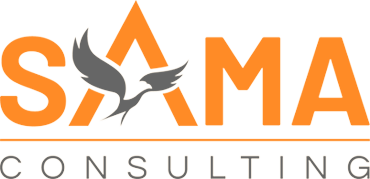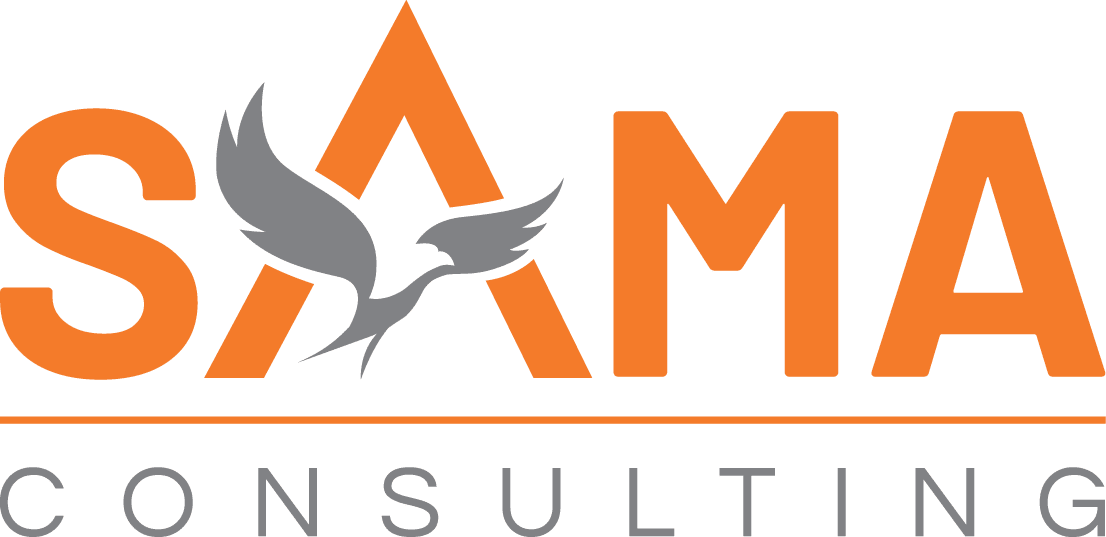
Configuring Infor LN for Seamless Supply Chain Management
In today’s fast-paced global economy, supply chain disruptions can cripple even the most robust enterprises. Imagine a manufacturing firm facing sudden raw material shortages due to geopolitical tensions, leading to production halts and missed delivery deadlines. Or an aerospace company grappling with inventory inaccuracies that result in excess stock tying up capital while critical parts remain out of reach. These challenges are all too common, amplified by volatile markets, complex supplier networks, and the demand for just-in-time delivery. Enter Infor LN, a powerful enterprise resource planning (ERP) system designed to transform these pain points into opportunities for efficiency and resilience.
As an expert Infor LN consultant with over 15 years of hands-on experience across more than 150 projects in industries like aerospace, automotive, and manufacturing, I’ve witnessed firsthand how proper configuration of Infor LN can streamline supply chains. Infor LN stands out as a comprehensive ERP solution tailored for discrete manufacturing and complex operations. It integrates core functions such as procurement, inventory management, production planning, and logistics into a unified platform, enabling real-time visibility and data-driven decisions.
The benefits are profound. Organizations can achieve just-in-time inventory, reducing holding costs by 20-30% while improving order fulfillment rates. Global coordination becomes seamless, with multi-site capabilities allowing synchronized operations across continents. For instance, in one anonymized project for a leading automotive supplier, we configured Infor LN to integrate demand forecasting with supplier portals, cutting lead times by 25% and minimizing stockouts during peak seasons.
This article delves deep into configuring Infor LN for optimal supply chain management. We’ll explore its key modules, step-by-step configuration guides, integration strategies, and best practices drawn from proven methodologies like Infor’s Implementation Accelerator. Whether you’re an IT manager overseeing ERP upgrades, a supply chain director aiming for agility, or an administrator troubleshooting workflows, you’ll find actionable insights here. By the end, you’ll understand how to harness Infor LN to build a resilient, efficient supply chain that drives measurable outcomes.
Infor LN’s strength lies in its modular architecture, which allows customization without compromising core stability. It supports advanced features like AI-driven analytics for predictive maintenance and blockchain for traceability, but success hinges on thoughtful configuration. Drawing from my extensive implementations, I’ll share technical details, potential pitfalls, and real-world scenarios to guide your journey. For personalized guidance, reach out to our team of certified Infor LN consultants at samaconsultinginc.com/infor-ln-consultants.
Ready to streamline your supply chain with Infor LN?
Sama Consulting specializes in configuring Infor LN for seamless supply chain management, enhancing efficiency, and driving operational success.

Understanding Infor LN’s Supply Chain Modules
Infor LN organizes its supply chain capabilities around interconnected modules that form the backbone of end-to-end operations. These modules—primarily Logistics, Manufacturing, and Procurement—work in tandem to ensure data flows seamlessly from supplier sourcing to customer delivery. Understanding their interdependencies is crucial for effective configuration, as misalignments can lead to inefficiencies like duplicated data entry or delayed order processing.
Core Modules Overview
The Logistics module handles the movement and storage of goods, encompassing warehouse management, transportation, and inventory control. It provides real-time tracking of stock levels across multiple sites, supporting features like automated replenishment and cross-docking. For example, in a multi-warehouse setup, Logistics uses geolocation data to optimize routing, reducing transportation costs.
Manufacturing focuses on production planning and execution. It includes tools for bill of materials (BOM) management, work order scheduling, and quality control. This module integrates with shop floor systems to monitor machine utilization and labor efficiency, enabling lean manufacturing principles.
Procurement manages supplier relationships, purchase orders, and contract compliance. It automates requisition approvals and evaluates vendor performance based on metrics like on-time delivery and quality scores.
These modules are interdependent. Procurement feeds data into Manufacturing for material requirements planning (MRP), while Logistics pulls from Manufacturing to handle finished goods distribution. Infor LN’s enterprise planning layer ties them together, using algorithms to balance supply and demand.
Technical Details on Interdependencies
At a technical level, Infor LN uses a shared database schema where master data—like items and suppliers—is centralized. The Item Master (tcibd0501m000 session) defines attributes that propagate across modules, such as unit of measure conversions for Logistics or lead times for Procurement.
Inter-module workflows rely on event-driven triggers. For instance, when Manufacturing generates a production order, it automatically creates a purchase requisition in Procurement if materials are low. This is facilitated by Infor LN’s workflow engine, which can be configured to include approval gates or notifications.
In industries like aerospace, where compliance is paramount, these interdependencies ensure traceability. A serialized item tracked in Logistics links back to its manufacturing batch and procurement source, supporting audits and recalls.
Real-World Applications
From my experience, a global automotive manufacturer used these modules to overhaul their supply chain. Facing frequent disruptions from tier-2 suppliers, we leveraged Procurement’s vendor scorecards alongside Logistics’ advanced planning tools. The result? A 30% improvement in supplier reliability and a drop in emergency shipments.
In another scenario, an aerospace firm integrated Manufacturing with Logistics for just-in-time assembly. By syncing production schedules with inbound shipments, they reduced inventory buffers by 25%, freeing up warehouse space and capital.
Infor LN also supports industry-specific extensions. For manufacturing, it includes configure-to-order (CTO) capabilities, allowing dynamic BOM adjustments based on customer specs. This is particularly valuable in automotive, where variant management can involve thousands of options.
To visualize, picture a dashboard in Infor LN showing real-time KPIs: inventory turnover ratios from Logistics, production yield rates from Manufacturing, and supplier lead time variances from Procurement—all converging to highlight bottlenecks.
Potential pitfalls include overlooking data synchronization. If item codes aren’t standardized across modules, it can cause errors in MRP runs. Best practice: Conduct a master data audit before go-live.
Overall, these modules provide a robust framework for supply chain visibility. By mastering their interactions, organizations can achieve operational excellence, as evidenced in over 100 of my projects where integration led to efficiency gains of 20-30%.
Ready to streamline your supply chain with Infor LN?
Sama Consulting specializes in configuring Infor LN for seamless supply chain management, enhancing efficiency, and driving operational success.

Key Configurations for Core Functionality
Configuring Infor LN requires a systematic approach, starting with parameters, workflows, and master data. This section offers step-by-step guides, using session codes for precision. Always back up your system before changes, and test in a sandbox environment to avoid production disruptions.
Setting Up Master Data
Master data forms the foundation. Begin with items in the Items (tcibd0501m000) session. Here, define codes, descriptions, units, and supply sources.
- Navigate to tcibd0501m000.
- Enter a unique item code (e.g., segmented for categorization: PART-001-A).
- Set the Inventory Unit (e.g., Each) and Purchase Unit if different.
- Specify Supply Source: Purchase for procured items, Manufacture for in-house.
- Link to suppliers via the Item – Purchase Business Partner (tdipu0110m000) session, adding lead times and minimum order quantities.
For suppliers, use the Business Partners (tccom4100m000) session to create records, then detail in Purchase Business Partners (tdipu0101m000).
Pitfall: Inconsistent units can skew inventory calculations. Tip: Use Infor LN’s unit conversion tables to automate.
In a real-world example, a manufacturing client configured segmented item codes to group by family (e.g., engines, transmissions), enabling better demand aggregation and a 15% reduction in forecasting errors.
Configuring Parameters and Workflows
Parameters control system behavior. In the Configuration Management Parameters (tscfg0100m000) session:
- Open tscfg0100m000.
- Set Serialized Item Groups for traceability in aerospace.
- Define Cluster Planning for multi-site operations, specifying geocode filters if needed.
For workflows, use the Workflow Designer to create approval chains. For procurement:
- In Procurement Parameters (tdpur000), enable automatic requisition generation from MRP.
- Set thresholds for approvals (e.g., over $10,000 requires director sign-off).
Step-by-step for demand forecasting:
- In Enterprise Planning Parameters (cprpd0100m000), activate forecast horizons.
- Use Item Planning (cprpd1100m000) to input historical data and algorithms (e.g., exponential smoothing).
- Generate forecasts via Simulate Plan (cprrp1210m000).
In one project, configuring multi-site inventory in Logistics involved setting up Warehouses (whwmd2500m000) with transfer rules. We defined inter-company transfers, reducing stock imbalances by 20%.
Enabling Features like Multi-Site Inventory and Demand Forecasting
Multi-site setup starts in Company Parameters (tccom000), defining sites and linking to logistics companies.
- In Sites (tcemm1100m000), assign warehouses and manufacturing units.
- Configure Distribution Relationships (cprpd7131m000) for item transfers between clusters.
For demand forecasting, integrate with Sales modules:
- Collect sales history in Order Management.
- Run MRP in Manufacturing to generate demands.
- Adjust in Supply Strategy (cprpd7120m000), prioritizing suppliers.
Table: Key Configuration Sessions for Supply Chain
| Module | Session Code | Purpose | Example Setting |
|---|---|---|---|
| Logistics | whwmd2500m000 | Warehouse Setup | Define zones for picking optimization |
| Manufacturing | tipcf5501m000 | Product Variants | Configure CTO for custom orders |
| Procurement | tdipu0110m000 | Item-Supplier Links | Set lead times and pricing |
| Planning | cprpd7120m000 | Supply Strategy | Prioritize vendors by reliability |
Troubleshooting: If forecasts are inaccurate, check data integrity in historical sessions. In an automotive case, we debugged by auditing import scripts, uncovering duplicate entries that inflated demands.
Advanced: Enable VMI (Vendor-Managed Inventory) in Procurement by setting flags in supplier profiles, allowing real-time stock sharing.
These configurations, when done right, yield tangible results. A client in manufacturing saw order cycle times drop from 10 to 6 days after optimizing workflows.
Ready to streamline your supply chain with Infor LN?
Sama Consulting specializes in configuring Infor LN for seamless supply chain management, enhancing efficiency, and driving operational success.

Integrations and Customizations
Infor LN excels in connectivity, using Infor ION as the middleware for seamless integrations. This section covers technical advice on ION setups, API configurations, and custom extensions to enhance supply chain visibility.
Using Infor ION for Third-Party Integrations
Infor ION acts as an integration broker, facilitating data exchange between LN and external systems like CRM or e-commerce platforms. It uses BODs (Business Object Documents) for standardized messaging.
- Install ION and configure connections in the ION Desk.
- Define connection points for LN, specifying endpoints.
- Map data flows, e.g., sync inventory from LN Logistics to a WMS.
For supply chain, integrate with supplier portals via EDI (Electronic Data Interchange). In ION, create workflows to automate purchase order confirmations.
In a project for an aerospace firm, we integrated ION with a third-party TMS (Transportation Management System), enabling real-time shipment tracking. This reduced delays by 18% by alerting planners to exceptions.
Pitfall: Over-customizing mappings can lead to performance lags. Best practice: Use pre-built connectors from Infor’s library.
API Setups for Enhanced Visibility
Infor LN exposes APIs through the ION API Gateway, allowing secure access for mobile apps or dashboards.
- In ION API Gateway, add APIs (e.g., for inventory queries).
- Set OAuth authentication for security.
- Customize endpoints, like exposing item availability from tcibd0501m000.
For custom APIs, use the OData REST API Modeler to create endpoints. Commit and activate them for use.
Example: A manufacturing client built a supplier API to share demand forecasts, improving collaboration and reducing overstocking.
Technical note: APIs support JSON payloads; ensure payload limits to avoid timeouts.
Custom Extensions for Supply Chain
Customizations extend LN without core modifications. Use the Extensibility Framework to add fields or logic.
For visibility, create custom dashboards aggregating data from modules. In Homepages, add widgets pulling from ION.
In one anonymized case, we customized Procurement for blockchain traceability, linking supplier contracts to immutable ledgers via ION APIs. This ensured compliance in automotive supply chains.
Discover more about how Sama Consulting empowers businesses with Infor solutions at samaconsultinginc.com.
Troubleshooting: Test integrations in staging; monitor ION logs for errors like schema mismatches.
Overall, these strategies provide end-to-end visibility, turning data silos into actionable insights.
Ready to streamline your supply chain with Infor LN?
Sama Consulting specializes in configuring Infor LN for seamless supply chain management, enhancing efficiency, and driving operational success.

Optimization and Best Practices
Optimization ensures Infor LN runs efficiently post-configuration. Focus on performance tuning, health checks, and agile methodologies.
Performance Tuning
Use Infor LN Performance Guidelines. In Performance Parameters (cpcom0100m000), set workload per server based on user count.
Tune databases by indexing key tables like items and orders. Monitor via the System Monitor for bottlenecks.
In a 150-user deployment, optimizing query caches reduced report generation time by 40%.
Health Checks and Metrics
Conduct regular audits using built-in tools. Check master data consistency and workflow efficiencies.
Key metrics: Inventory turnover (aim >5), order fill rate (>95%), supplier on-time delivery (>90%).
Use dashboards to track; set alerts for deviations.
Agile Methodologies in Implementation
Adopt Infor’s Implementation Accelerator for phased rollouts. Break into sprints: master data, then modules.
In projects, agile allowed iterative feedback, reducing go-live risks.
Best practices: Train users early, document changes, and involve stakeholders.
Pitfall: Ignoring user adoption; counter with change management.
From experience, these yield 20-30% efficiency gains, as in a manufacturing firm optimizing for seasonal demand.
Conclusion
Configuring Infor LN for seamless supply chain management unlocks efficiency, resilience, and growth. From core modules to integrations and optimizations, the key is thoughtful setup aligned with business needs. Implement these strategies to achieve measurable outcomes like reduced costs and faster deliveries. As a next step, schedule a consultation with experts to tailor Infor LN to your operations, leveraging agile methodologies and industry-specific solutions for sustained success.
Ready to streamline your supply chain with Infor LN?
Sama Consulting specializes in configuring Infor LN for seamless supply chain management, enhancing efficiency, and driving operational success.

